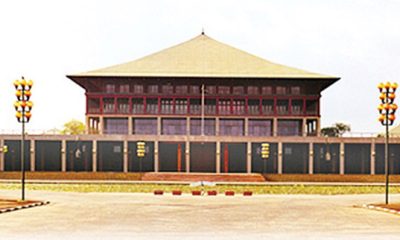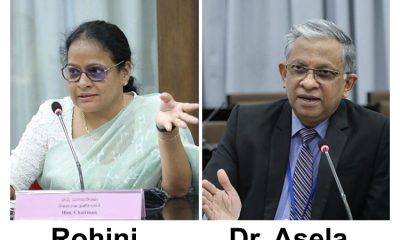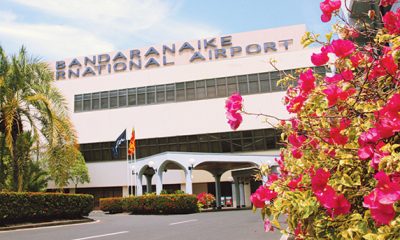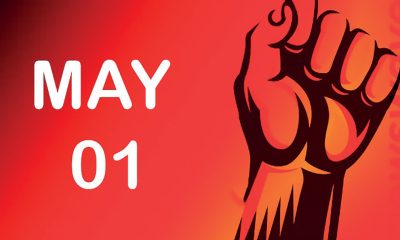Features
Domestic Debt Restructuring – An Alternate View
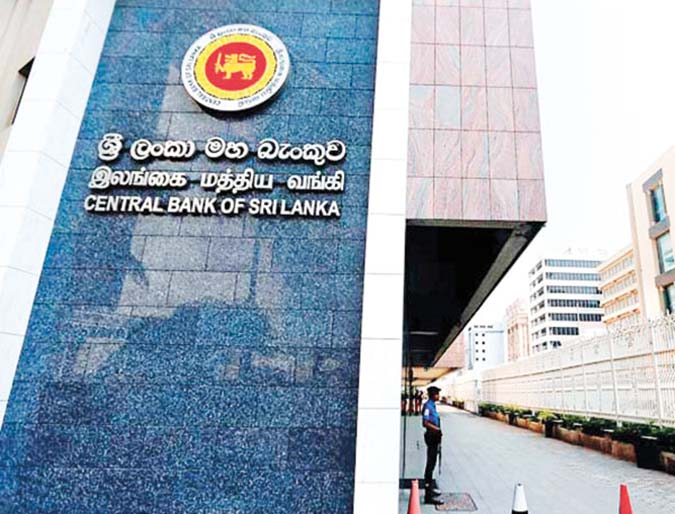
by Romesh Bandaranaike, Ph.D.
There have been substantial and wide spread criticisms of the recently instituted Domestic Debt Restructuring (DDR) scheme carried out by Central Bank of Sri Lanka (CBSL), to reduce the Sri Lanka Government’s requirements for funding. In this article I argue that the scheme, as structured and carried out by CBSL, is appropriate, given the ground realities in the country, and that the critics have ignored a number of factors which forced CBSL to design the scheme as it did. I then suggest additional steps the Government could take to further improve its financial position in connection with past Bond issues.
The DDR Scheme
Faced with massive shortfalls in revenue, the Government recently carried out a “restructuring” of the debts it owed on Sri Lanka Rupee denominated Treasury Bills and Bonds in an effort to substantially improve Government finances, including the funds needed to service these Bills/Bonds. The two key elements of the DDR are a) Converting all Treasury Bills presently owned by CBSL to longer term Treasury Bonds, thereby substantially delaying the payment dates on these Bills; and b) Effectively “forcing” the Employees Provident Fund (EPF) and other superannuation funds to exchange most of the Bonds they hold for 12 year Bonds with somewhat lower interest payments.
They did this by threatening to increase the tax rates that EPF pays on its annual income to 30% from the present 14%, if they did not accept the Bond exchange. Since such an increase was financially worse for EPF compared with the Bond exchange, EPF opted for the latter.
CBSL estimates that the scheme would reduce the Gross Financing Needs (GFN) of the Government by 1.5%, 1% by the CBSL Bill-Bond exchange and 0.5% by the EPF Bond exchange.
The Criticisms
The principal criticisms of the DDR, from the public, Trade Unions, Economic Think Tanks, and numerous “Experts,” is that the entire burden of the DDR is being placed on the backs of the retirement savings of “poor workers” who are the members of EPF.
CBSL has justified the proposed increase in the tax rates for EPF and other superannuation funds to 30% from the present 14% on the basis that the banks have to pay the higher tax rate of 30% plus VAT. Dr. Wijewardena, a former CBSL Deputy Governor, has written several articles criticizing CBSL for not presenting the correct picture in this regard and not disclosing full information on the impacts of the restructuring on EPF members’ returns. Dr. W’s main argument is that, in the case of the banks, the tax rate applies to “net interest”, whereas, in the case of the EPF, it applies to “gross interest.” For the banks, net interest is interest earnings on its loans less the interest it pays to depositors.
In the case of EPF, Dr. W points out that EPF is not allowed to subtract the interest it pays to EPF account holders to determine its income and tax liability, and that CBSL comparison of bank and EPF tax rates is therefore misleading. In a subsequent article by Dr. W, he criticizes CBSL/EPF for not fully disclosing the cost to EPF holders of accepting the proposed DDR compared with an increase in EPF’s tax rate to 30% and the justification for accepting the Bond exchange rather than the tax increase to 30%. He goes on to add that CBSL has a conflict of interest as both the developer of Government policy and as the administrator of EPF.
My Responses to the Criticisms
The criticism that the entire burden of the DDR is on the backs of workers is factually incorrect. As stated above, two-third of the 1.5% reduction in GFN (1%) is being achieved by exchanging the Treasury Bills held by CBSL for long term Bonds. Only 0.5% of the reduction is from the exchange of Bonds held by the EPF and other superannuation funds. In other words, 67% of the restructuring cost is borne by CBSL (in effect by all citizens), while only 33% is borne by EPF account holders. Furthermore, only workers in the formal private sector contribute to the EPF/ETF, while workers in the informal private sector (e.g. farmers, fishermen, small transporters, traders and construction workers) and Government employees do not.
As a result, only about 25-30% of the workers in the country have EPF accounts. Therefore, 70-75% of workers in the country will not suffer any burden due to the EPF bond restructuring. Finally, the workers with EPF accounts also include middle and senior management of companies who cannot be called “poor workers” as referred to in the various criticisms of the present DDR scheme. It is true that this category may only be a very small percentage of those holding EPF accounts. However, their account balances are likely to be very much higher than other EPF members and the impact of the restructuring on them will be proportional to these balances.
It would be ideal if the EPF could release statistics in this regard which will allow an assessment of this element. For example, the fraction of the total EPF funds held by those with EPF balances of over Rs 5 million (say), since such persons cannot be classified as “poor workers.” Workers who have balances in EPF/ETF, built up as a result of deductions from their salaries and additional higher contributions from their employers, at least have a retirement fund they can turn to, even if it is somewhat less because of the DDR. It could conceivably be argued that the 70-75% of workers who do not have such balances, mostly working in the informal sector, are worse off or poorer than those with EPF balances. This would be a justification for placing the burden of part of the DDR on EPF account holders rather than on other, even “poorer”, workers.
In response to Dr. W’s criticisms that EPF and bank tax rates are not comparable the way CBSL has done; each year, EPF determines a percentage it will pay/accrue to the account of each EPF account holder based on the earnings by the EPF that year. This percentage is not an interest similar to that paid by banks to its depositors and is not a cost that is deductible by EPF to calculate its tax liability each year. It is simply a percentage decided by the EPF administrators to allocate the profits after tax earned by the EPF during the year. Calling this percentage an “interest” is a misnomer. Account holders in EPF are akin to shareholders in banks and not depositors.
The amounts credited by EPF to a member’s account each year, based on EPF’s earnings during the year, is not a cost incurred by EPF in generating these earnings. It is something closer to a dividend paid by a bank to its shareholders in the form of additional shares. If EPF is allowed to determine its tax liabilities by subtracting these accrued amounts, banks should be able to deduct dividend costs in determining their tax liabilities. Dr. W’s criticism of the non-comparability of bank and EPF tax rates cannot be sustained.
Dr. W uses CBSL/EPF’s own numbers on the differences in returns under the two scenarios EPF has been offered and simply multiplies it by the total EPF Bond holding value to arrive at the cost to EPF of accepting the Bond exchange. This is something that could have readily been done by anyone and Dr. W’s implication that CBSL/EPF is hiding/not fully disclosing something in its statement cannot be sustained.
The CBSL/EPF analysis is simply to show that the return to EPF is better under the scenario where it accepts the DDR option, compared to rejecting the DDR option and being subject to a 30% tax rate. This information is more than sufficient for EPF to recommend to its Board that it should accept the DDR. Dr. W than goes into the past history of taxation rates applicable to the EPF and points out that as originally envisaged EPF earnings were to be tax exempt.
He shows calculations of the losses to EPF holders of the present DDR, compared with a situation if EPF earnings were tax exempt. This is a straw man put up by Dr. W to be knocked down as part of his criticism of CBSL/EPF. It is the tax rates that are applicable to EPF today, before the DDR, that are relevant and it would have been nonsensical for CBSL to show calculations based on what if the tax rates were those that existed many years ago.
With respect to the criticism that CBSL has a conflict of interest in both being the administrator of EPF and the policy advisor recommending the DDR, I do not see any conflict. CBSL, as advisor to the Government, has made the DDR proposal which allows EPF to choose between two options, accept the proposed DDR Bond exchange or reject it and be subject to a 30% tax rate. As the administrator of the EPF, CBSL has simply analysed these two options and clearly shown that the EPF is better off accepting the Bond exchange compared with rejecting it and being subject to a 30% tax rate.
Other Relevant Issues
It is telling that none of those criticizing the present process have offered any viable alternative DDR arrangement to achieve the same objectives as the present exercise. In saying this, I am ignoring the suggestions by some parties who say there would be no need for the exercise if “The money stolen by the Rajapaksa’s is recovered” or “The large corruption in Government is reduced,” and so on. Such actions, even if they were possible, are not alternatives, because they cannot be achieved in the short or medium term, which is one of the key objectives of the DDR. Verite Research did, some time ago before the announcement of the present DDR, present some analysis on a possible DDR which included sharing the cut across all Bond holders, but, for the reasons I refer to below, this is not a viable arrangement.
CBSL in its original presentation to the Cabinet, and subsequently to the public, argued that it would be prudent to exclude the Banks from the DDR exercise, because these institutions were already under stress as a result of COVID related business failures and because the banks would also be taking a hit from the future restructuring of USD Bonds, some of which are held by them.
CBSL was of the view that such an exclusion was essential to ensure financial system stability. None of those criticizing the present DDR arrangements have objected to this and I concur with that view. Even if the banks are able to bear the burden of some restructuring of the domestic bonds they hold, bank stability is also dependent on public perception, and excluding them from the DDR has certainly had a positive impact on such perception.
There are two unstated conditions applicable to the DDR exercise which have received no mention in the ongoing discussions. First, the DDR should be concluded in a short time frame since it will be a pre-condition to the restructuring of foreign currency debt. Second, it must be carried out in a legally valid manner. A Government Bond is a legal contract between the Government and the holder of the Bond.
The Government is legally obligated to pay the interest coupon and the principal of the Bond on specified dates according to this legal contract. The Government has no legal authority to change the conditions of this Bond. It could, of course, pass a new law in Parliament giving itself the authority to make changes to existing Bonds. In doing so, however, if all Bond holders are not treated equally (in particular, if the bank holdings of Bonds are excluded), there are bound to be legal challenges in the Courts to any such changes, and the changes may well be struck down by the Courts.
Even if such changes are not struck down, this process can take considerable time to be determined and would not be achievable in the time frame required for the DDR process to be concluded as discussed previously. The present DDR has finessed the issue of different treatments of Bond holders by making it “voluntary”, albeit by holding a gun to the head of the EPF and superannuation funds in the manner detailed earlier. This is draconian, but effective.
As per CBSL statistics presented in connection with the original DDR proposal, the total outstanding amount of Treasury Bonds at that time was Rs. 8,700 billion. Of this amount Rs 1,644 billion is held by “Others”, after excluding the banks and EPF and superannuation funds being subject to the DDR. Even if the banks are excluded from the DDR to ensure “financial system stability” reasons mentioned previously, it would have been ideal if the “Others” holding the Rs 1,644 billion in outstanding Bonds were subject to some “restructuring”, in the form of cuts in coupon rates and/or face value, or an extension of the tenor of these Bonds.
If this was done, the benefit of these cuts could have been passed on in the form of a reduction in the burden passed onto EPF and superannuation funds. However, such an unequal treatment where some Bond holders (the banks) are excluded, even if the necessary legislation is passed, would certainly have resulted in legal challenges which would, at the least, have delayed the process as I have pointed out earlier, or even been found unconstitutional by the Courts.
Further Actions in Respect of Bonds
Very high yield rate Bonds (over 20% yield) were issued by the Government during the period prior to the announcement of the DDR (April 8, 2022 to March 13, 2023) as a consequence of severe financial shortages faced by the Government. Bidders for these Bonds added a premium to the bid yield rates, expecting a future restructuring of these Bonds as part of the DDR they knew was coming. By being excluded from the DDR, these Bond holders have enjoyed a “windfall profit.” It is not possible to specifically target these Bonds for a cut in coupons or face value, because many of the original holders may have sold some of these Bonds and have already earned the windfall profits.
[The buyers of the Bonds would only receive a “normal” profit in the form of coupon payments and final redemption.] Furthermore, in the case of individual Bond holders, their windfall profit would be in the form of a capital gain, which only attracts a tax rate of 10%. Corporates/ banks in the same situation would be paying a tax of 30% on their capital gains. I propose that the Government should “claw back” some of these profits by imposing a special windfall tax rate of 50% applicable to all profits derived from these Bonds. If the original purchaser has not sold the Bonds, the coupon interest and the capital gains on final face value redemption should also be taxed at 50%.
There would be some complications in structuring this tax, since some high yield Bonds may have changed hands within the period that high yield Bonds were still being issued, which means that the initial purchaser would only have made a small capital gain and the next buyer would still be enjoying the high coupon rate or subsequently selling the Bond for a large capital gain. A proper structuring of the 50% windfall tax can ensure that the taxes fall on those making the windfall profits. A tax of the type proposed will clearly be borne by the wealthy, who would have been the purchasers of these Bonds, and go some way towards balancing the burden imposed on less wealthy parties as a result of the DDR.
To place this suggestion in perspective, between April 8, 2022 and March 13, 2023 all Bonds issued by CBSL had yield rates in excess of 20%. The total face value of such Bonds was Rs 1,233 billion. The weighted average yield on these Bonds was 27.89% and the weighted average coupons in these Bonds was 19.09%. The latest four-year Bond yield rate is approximately 15% and this is likely to drop further.
As a result, any seller today of an average high yield Bond would make a significant capital gain on the sale and would need to pay substantial taxes to the Government at the proposed 50% windfall tax rate. As per CBSL statistics in the original CBSL presentation to the Cabinet, approximately 63.5% of all Bonds at that time were held by the banks and the “Other” category. If this percentage is also applicable to the high yield Bonds referred to above, the banks and the “Other” category would be holding Rs 777 billion of these Bonds.
Advocata has recently analysed EPF’s Bond portfolio prior to the DDR Bond exchange and concluded that EPF’s share of high yield Bonds was proportionately much less than for other Bond holders. Therefore, banks and “Others” would probably be holding even more than the above mentioned Rs 777 billion in such high yield Bonds which, in turn, will mean that a 50% windfall tax on the profits from these Bonds will result in substantial tax revenues for the Government.
An aside at this point is that for some unclear reason there is no withholding tax (WHT) applied to the interest earnings on Bonds as in the case of interest earnings from deposits in banks and finance companies. I have made inquiries as to why this is so from several senior Government officials and have not received any explanation for the practice.
It may well be that some Bond holders do not even have income tax files and that they are evading all taxes payable on Bond interest. Since Bond holders are all likely to be at the highest tax bracket given the minimum sizes of Bond investments, I suggest that a WHT of 30% be applied to all Bond interest payments. Holders are free to file tax returns and seek a refund if they have been taxed in excess of their liability due to such a WHT. I have been told there is some complication in applying WHT to Bond interest held by foreigners. If that is indeed the case, foreign holdings of Bonds could be excluded.
Conclusions
The economy of the country is in dire straits as a result primarily of bad/foolish policies of recent past Governments (including those by CBSL under its previous two Governors and Monetary Boards at that time) coupled with the endemic corruption inherent in the system. The present Governor of CBSL and his professional colleagues are facing very difficult conditions and are striving to get the country’s finances back on track.
I can understand trade unions, workers and other similar entities objecting to the implementation of policies which directly impact them, irrespective of whether such policies are needed to solve the country’s issues. But, why is it that so called “experts” and think tanks do not recognize the ground realities of what is practically achievable and support the efforts of CBSL rather than criticizing these efforts in print and at discussion forums?
(The author is an economist with wide experience in policy formulation and implementation in the Ministry of Finance and has worked at CEO level in both public and private sectors.
Features
Inescapable need to deal with the past

The sudden reemergence of two major incidents from the past, that had become peripheral to the concerns of people today, has jolted the national polity and come to its centre stage. These are the interview by former president Ranil Wickremesinghe with the Al Jazeera television station that elicited the Batalanda issue and now the sanctioning of three former military commanders of the Sri Lankan armed forces and an LTTE commander, who switched sides and joined the government. The key lesson that these two incidents give is that allegations of mass crimes, whether they arise nationally or internationally, have to be dealt with at some time or the other. If they are not, they continue to fester beneath the surface until they rise again in a most unexpected way and when they may be more difficult to deal with.
In the case of the Batalanda interrogation site, the sudden reemergence of issues that seemed buried in the past has given rise to conjecture. The Batalanda issue, which goes back 37 years, was never totally off the radar. But after the last of the commission reports of the JVP period had been published over two decades ago, this matter was no longer at the forefront of public consciousness. Most of those in the younger generations who were too young to know what happened at that time, or born afterwards, would scarcely have any idea of what happened at Batalanda. But once the issue of human rights violations surfaced on Al Jazeera television they have come to occupy centre stage. From the day the former president gave his fateful interview there are commentaries on it both in the mainstream media and on social media.
There seems to be a sustained effort to keep the issue alive. The issues of Batalanda provide good fodder to politicians who are campaigning for election at the forthcoming Local Government elections on May 6. It is notable that the publicity on what transpired at Batalanda provides a way in which the outcome of the forthcoming local government elections in the worst affected parts of the country may be swayed. The problem is that the main contesting political parties are liable to be accused of participation in the JVP insurrection or its suppression or both. This may account for the widening of the scope of the allegations to include other sites such as Matale.
POLITICAL IMPERATIVES
The emergence at this time of the human rights violations and war crimes that took place during the LTTE war have their own political reasons, though these are external. The pursuit of truth and accountability must be universal and free from political motivations. Justice cannot be applied selectively. While human rights violations and war crimes call for universal standards that are applicable to all including those being committed at this time in Gaza and Ukraine, political imperatives influence what is surfaced. The sanctioning of the four military commanders by the UK government has been justified by the UK government minister concerned as being the fulfilment of an election pledge that he had made to his constituents. It is notable that the countries at the forefront of justice for Sri Lanka have large Tamil Diasporas that act as vote banks. It usually takes long time to prosecute human rights violations internationally whether it be in South America or East Timor and diasporas have the staying power and resources to keep going on.
In its response to the sanctions placed on the military commanders, the government’s position is that such unilateral decisions by foreign government are not helpful and complicate the task of national reconciliation. It has faced criticism for its restrained response, with some expecting a more forceful rebuttal against the international community. However, the NPP government is not the first to have had to face such problems. The sanctioning of military commanders and even of former presidents has taken place during the periods of previous governments. One of the former commanders who has been sanctioned by the UK government at this time was also sanctioned by the US government in 2020. This was followed by the Canadian government which sanctioned two former presidents in 2023. Neither of the two governments in power at that time took visibly stronger stands.
In addition, resolutions on Sri Lanka have been a regular occurrence and have been passed over the Sri Lankan government’s opposition since 2012. Apart from the very first vote that took place in 2009 when the government promised to take necessary action to deal with the human rights violations of the past, and won that vote, the government has lost every succeeding vote with the margins of defeat becoming bigger and bigger. This process has now culminated in an evidence gathering unit being set up in Geneva to collect evidence of human rights violations in Sri Lanka that is on offer to international governments to use. This is not a safe situation for Sri Lankan leaders to be in as they can be taken before international courts in foreign countries. It is important for Sri Lanka’s sovereignty and dignity as a country that this trend comes to an end.
COMPREHENSIVE SOLUTION
A peaceful future for Sri Lanka requires a multi-dimensional approach that addresses the root causes of conflict while fostering reconciliation, justice, and inclusive development. So far the government’s response to the international pressures is to indicate that it will strengthen the internal mechanisms already in place like the Office on Missing Persons and in addition to set up a truth and reconciliation commission. The difficulty that the government will face is to obtain a national consensus behind this truth and reconciliation commission. Tamil parties and victims’ groups in particular have voiced scepticism about the value of this mechanism. They have seen commissions come and commissions go. Sinhalese nationalist parties are also highly critical of the need for such commissions. As the Nawaz Commission appointed to identify the recommendations of previous commissions observed, “Our island nation has had a surfeit of commissions. Many witnesses who testified before this commission narrated their disappointment of going before previous commissions and achieving nothing in return.”
Former minister Prof G L Peiris has written a detailed critique of the proposed truth and reconciliation law that the previous government prepared but did not present to parliament.
In his critique, Prof Peiris had drawn from the South African truth and reconciliation commission which is the best known and most thoroughly implemented one in the world. He points out that the South African commission had a mandate to cover the entire country and not only some parts of it like the Sri Lankan law proposes. The need for a Sri Lankan truth and reconciliation commission to cover the entire country and not only the north and east is clear in the reemergence of the Batalanda issue. Serious human rights violations have occurred in all parts of the country, and to those from all ethnic and religious communities, and not only in the north and east.
Dealing with the past can only be successful in the context of a “system change” in which there is mutual agreement about the future. The longer this is delayed, the more scepticism will grow among victims and the broader public about the government’s commitment to a solution. The important feature of the South African commission was that it was part of a larger political process aimed to build national consensus through a long and strenuous process of consultations. The ultimate goal of the South African reconciliation process was a comprehensive political settlement that included power-sharing between racial groups and accountability measures that facilitated healing for all sides. If Sri Lanka is to achieve genuine reconciliation, it is necessary to learn from these experiences and take decisive steps to address past injustices in a manner that fosters lasting national unity. A peaceful Sri Lanka is possible if the government, opposition and people commit to truth, justice and inclusivity.
by Jehan Perera
Features
Unleashing Minds: From oppression to liberation

 Education should be genuinely ‘free’—not just in the sense of being free from privatisation, but also in a way that empowers students by freeing them from oppressive structures. It should provide them with the knowledge and tools necessary to think critically, question the status quo, and ultimately liberate themselves from oppressive systems.
Education should be genuinely ‘free’—not just in the sense of being free from privatisation, but also in a way that empowers students by freeing them from oppressive structures. It should provide them with the knowledge and tools necessary to think critically, question the status quo, and ultimately liberate themselves from oppressive systems.
Education as an oppressive structure
Education should empower students to think critically, challenge oppression, and envision a more just and equal world. However, in its current state, education often operates as a mechanism of oppression rather than liberation. Instead of fostering independent thinking and change, the education system tends to reinforce the existing power dynamics and social hierarchies. It often upholds the status quo by teaching conformity and compliance rather than critical inquiry and transformation. This results in the reproduction of various inequalities, including economic, racial, and social disparities, further entrenching divisions within society. As a result, instead of being a force for personal and societal empowerment, education inadvertently perpetuates the very systems that contribute to injustice and inequality.
Education sustaining the class structure
Due to the widespread privatisation of education, the system continues to reinforce and sustain existing class structures. Private tuition centres, private schools, and institutions offering degree programmes for a fee all play a significant role in deepening the disparities between different social classes. These private entities often cater to the more affluent segments of society, granting them access to superior education and resources. In contrast, students from less privileged backgrounds are left with fewer opportunities and limited access to quality education, exacerbating the divide between the wealthy and the underprivileged. This growing gap in educational access not only limits social mobility but also perpetuates a cycle where the privileged continue to secure better opportunities while the less fortunate struggle to break free from the constraints of their socio-economic status.
Gender Oppression
Education subtly perpetuates gender oppression in society by reinforcing stereotypes, promoting gender insensitivity, and failing to create a gender-sensitive education system. And some of the policymakers do perpetuate this gender insensitive education by misinforming people. In a recent press conference, one of the former members of Parliament, Wimal Weerawansa, accused gender studies of spreading a ‘disease’ among students. In the year 2025, we are still hearing such absurdities discouraging gender studies. It is troubling and perplexing to hear such outdated and regressive views being voiced by public figures, particularly at a time when societies, worldwide, are increasingly embracing diversity and inclusion. These comments not only undermine the importance of gender studies as an academic field but also reinforce harmful stereotypes that marginalise individuals who do not fit into traditional gender roles. As we move forward in an era of greater social progress, such antiquated views only serve to hinder the ongoing work of fostering equality and understanding for all people, regardless of gender identity.
Students, whether in schools or universities, are often immersed in an educational discourse where gender is treated as something external, rather than an essential aspect of their everyday lives. In this framework, gender is framed as a concern primarily for “non-males,” which marginalises the broader societal impact of gender issues. This perspective fails to recognise that gender dynamics affect everyone, regardless of their gender identity, and that understanding and addressing gender inequality is crucial for all individuals in society.
A poignant example of this issue can be seen in the recent troubling case of sexual abuse involving a medical doctor. The public discussion surrounding the incident, particularly the media’s decision to disclose the victim’s confidential statement, is deeply concerning. This lack of respect for privacy and sensitivity highlights the pervasive disregard for gender issues in society.
What makes this situation even more alarming is that such media behaviour is not an isolated incident, but rather reflects a broader pattern in a society where gender sensitivity is often dismissed or ignored. In many circles, advocating for gender equality and sensitivity is stigmatised, and is even seen as a ‘disease’ or a disruptive force to the status quo. This attitude contributes to a culture where harmful gender stereotypes persist, and where important conversations about gender equity are sidelined or distorted. Ultimately, this reflects the deeper societal need for an education system that is more attuned to gender sensitivity, recognising its critical role in shaping the world students will inherit and navigate.
To break free from these gender hierarchies there should be, among other things, a gender sensitive education system, which does not limit gender studies to a semester or a mere subject.
Ragging
The inequality that persists in class and regional power structures (Colombo and non-Colombo division) creeps into universities. While ragging is popularly seen as an act of integrating freshers into the system, its roots lie in the deeply divided class and ethno-religious divisions within society.
In certain faculties, senior students may ask junior female students to wear certain fabrics typically worn at home (cheetta dresses) and braid their hair into two plaits, while male students are required to wear white, long-sleeved shirts without belts. Both men and women must wear bathroom slippers. These actions are framed as efforts to make everyone equal, free from class divisions. However, these gendered and ethicised practices stem from unequal and oppressive class structures in society and are gradually infiltrating university culture as mechanisms of oppression.The inequality that persists in gradually makes its way into academic institutions, particularly universities.
These practices are ostensibly intended to create a sense of uniformity and equality among students, removing visible markers of class distinction. However, what is overlooked is that these actions stem from deeply ingrained and unequal social structures that are inherently oppressive. Instead of fostering equality, they reinforce a system where hierarchical power dynamics in the society—rooted in class, gender, and region—are confronted with oppression and violence which is embedded in ragging, creating another system of oppression.
Uncritical Students
In Sri Lanka, and in many other countries across the region, it is common for university students to address their lecturers as ‘Sir’ and ‘Madam.’ This practice is not just a matter of politeness, but rather a reflection of deeply ingrained societal norms that date back to the feudal and colonial eras. The use of these titles reinforces a hierarchical structure within the educational system, where authority is unquestioned, and students are expected to show deference to their professors.
Historically, during colonial rule, the education system was structured around European models, which often emphasised rigid social distinctions and the authority of those in power. The titles ‘Sir’ and ‘Madam’ served to uphold this structure, positioning lecturers as figures of authority who were to be respected and rarely challenged. Even after the end of colonial rule, these practices continued to permeate the education system, becoming normalised as part of the culture.
This practice perpetuates a culture of obedience and respect for authority that discourages critical thinking and active questioning. In this context, students are conditioned to see their lecturers as figures of unquestionable authority, discouraging dialogue, dissent, or challenging the status quo. This hierarchical dynamic can limit intellectual growth and discourage students from engaging in open, critical discussions that could lead to progressive change within both academia and society at large.
Unleashing minds
The transformation of these structures lies in the hands of multiple parties, including academics, students, society, and policymakers. Policymakers must create and enforce policies that discourage the privatisation of education, ensure equal access for all students, regardless of class dynamics, gender, etc. Education should be regarded as a fundamental right, not a privilege available only to a select few. Such policies should also actively promote gender equality and inclusivity, addressing the barriers that prevent women, LGBTQ+ individuals, and other marginalised genders from accessing and succeeding in education. Practices that perpetuate gender inequality, such as sexism, discrimination, or gender-based violence, need to be addressed head-on. Institutions must prioritise gender studies and sensitivity training to cultivate an environment of respect and understanding, where all students, regardless of gender, feel safe and valued.
At the same time, the micro-ecosystems of hierarchy within institutions—such as maintaining outdated power structures and social divisions—must be thoroughly examined and challenged. Universities must foster environments where critical thinking, mutual respect, and inclusivity—across both class and gender—are prioritised. By creating spaces where all minds can flourish, free from the constraints of entrenched hierarchies, we can build a more equitable and intellectually vibrant educational system—one that truly unleashes the potential of all students, regardless of their social background.
(Anushka Kahandagamage is the General Secretary of the Colombo Institute for Human Sciences)
Kuppi is a politics and pedagogy happening on the margins of the lecture hall that parodies, subverts, and simultaneously reaffirms social hierarchies.
By Anushka Kahandagamage
Features
New vision for bassist Benjy
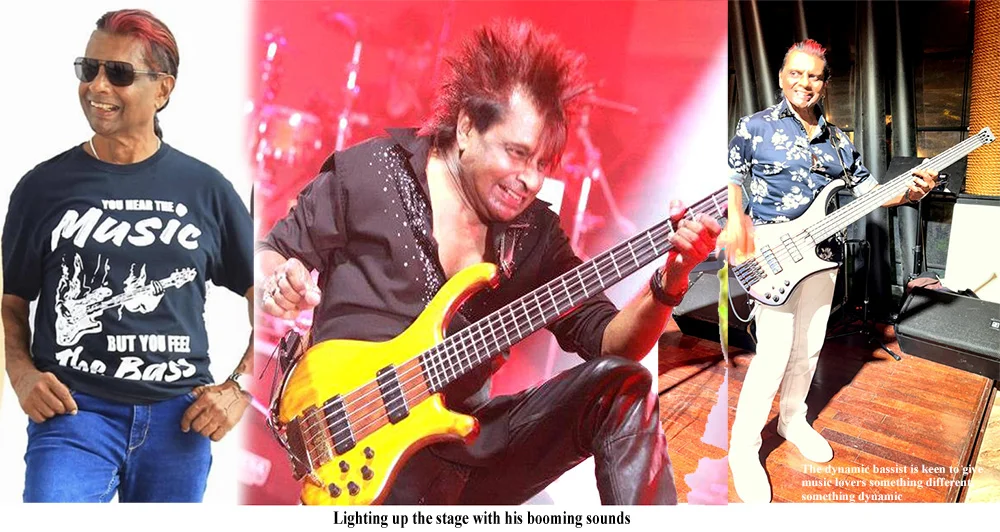
It’s a known fact that whenever bassist Benjy Ranabahu booms into action he literally lights up the stage, and the exciting news I have for music lovers, this week, is that Benjy is coming up with a new vision.
One thought that this exciting bassist may give the music scene a layoff, after his return from the Seychelles early this year.
At that point in time, he indicated to us that he hasn’t quit the music scene, but that he would like to take a break from the showbiz setup.
“I’m taking things easy at the moment…just need to relax and then decide what my future plans would be,” he said.
However, the good news is that Benjy’s future plans would materialise sooner than one thought.
Yes, Benjy is putting together his own band, with a vision to give music lovers something different, something dynamic.
He has already got the lineup to do the needful, he says, and the guys are now working on their repertoire.
The five-piece lineup will include lead, rhythm, bass, keyboards and drums and the plus factor, said Benjy, is that they all sing.
A female vocalist has also been added to this setup, said Benjy.
“She is relatively new to the scene, but with a trained voice, and that means we have something new to offer music lovers.”
The setup met last week and had a frank discussion on how they intend taking on the music scene and everyone seems excited to get on stage and do the needful, Benjy added.
Benjy went on to say that they are now spending their time rehearsing as they are very keen to gel as a team, because their skills and personalities fit together well.
“The guys I’ve got are all extremely talented and skillful in their profession and they have been around for quite a while, performing as professionals, both here and abroad.”
Benjy himself has performed with several top bands in the past and also had his own band – Aquarius.
Aquarius had quite a few foreign contracts, as well, performing in Europe and in the Middle East, and Benjy is now ready to do it again!
-

 Sports3 days ago
Sports3 days agoSri Lanka’s eternal search for the elusive all-rounder
-

 Features7 days ago
Features7 days agoCelebrating 25 Years of Excellence: The Silver Jubilee of SLIIT – PART I
-

 News4 days ago
News4 days agoGnanasara Thera urged to reveal masterminds behind Easter Sunday terror attacks
-

 Business7 days ago
Business7 days agoCEB calls for proposals to develop two 50MW wind farm facilities in Mullikulam
-

 Business5 days ago
Business5 days agoAIA Higher Education Scholarships Programme celebrating 30-year journey
-

 Features7 days ago
Features7 days agoNotes from AKD’s Textbook
-

 News2 days ago
News2 days agoBid to include genocide allegation against Sri Lanka in Canada’s school curriculum thwarted
-

 News3 days ago
News3 days agoComBank crowned Global Finance Best SME Bank in Sri Lanka for 3rd successive year






